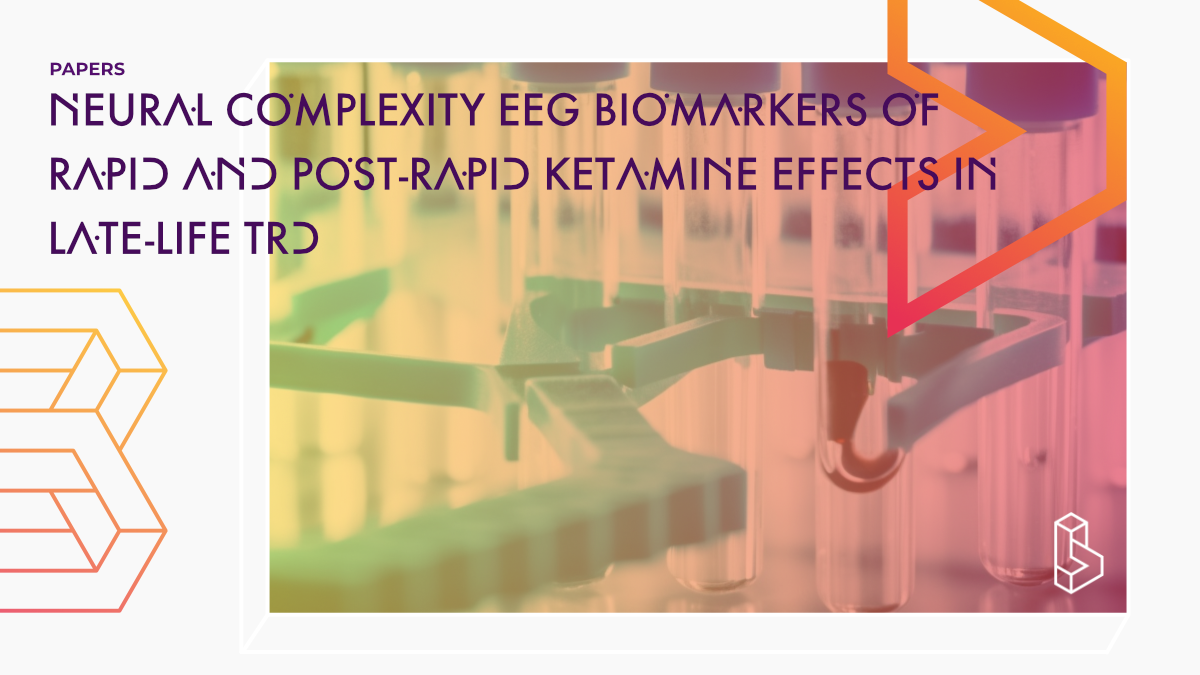This re-analysis from a randomized control trial (n=33) investigates the effects of IV ketamine or midazolam (active control) on military veterans with late-in-life treatment-resistant depression using two EEG neural complexity markers (Lempel-Ziv complexity and multiscale entropy). The study found that both complexity markers increased 30 minutes post-infusion, with time-varying effects on system-wide contributions to the evoked glutamatergic surge. Still, no relationship was observed between complexity and reduction in depressive symptoms.
Abstract
“Ketamine is an effective intervention for treatment-resistant depression (TRD), including late-in-life (LL-TRD). The proposed mechanism of antidepressant effects of ketamine is a glutamatergic surge, which can be measured by electroencephalogram (EEG) gamma oscillations. Yet, non-linear EEG biomarkers of ketamine effects such as neural complexity are needed to capture broader systemic effects, represent the level of organization of synaptic communication, and elucidate mechanisms of action for treatment responders. In a secondary analysis of a randomized control trial, we investigated two EEG neural complexity markers (Lempel-Ziv complexity [LZC] and multiscale entropy [MSE]) of rapid (baseline to 240 min) and post-rapid ketamine (24 h and 7 days) effects after one 40-min infusion of IV ketamine or midazolam (active control) in 33 military veterans with LL-TRD. We also studied the relationship between complexity and Montgomery-Åsberg Depression Rating Scale score change at 7 days post-infusion. We found that LZC and MSE both increased 30 min post-infusion, with effects not localized to a single timescale for MSE. Post-rapid effects of reduced complexity with ketamine were observed for MSE. No relationship was observed between complexity and reduction in depressive symptoms. Our findings support the hypothesis that a single sub-anesthetic ketamine infusion has time-varying effects on system-wide contributions to the evoked glutamatergic surge in LL-TRD. Further, changes to complexity were observable outside the time-window previously shown for effects on gamma oscillations. These preliminary results have clinical implications in providing a functional marker of ketamine that is non-linear, amplitude-independent, and represents larger dynamic properties, providing strong advantages over linear measures in highlighting ketamine’s effects.”
Find this paper
https://doi.org/10.1038/s41386-023-01586-4
Paywall | Google Scholar | Backup | 🕊
Cite this paper (APA)
Murphy, N., Tamman, A. J., Lijffijt, M., Amarneh, D., Iqbal, S., Swann, A., ... & Mathew, S. J. (2023). Neural complexity EEG biomarkers of rapid and post-rapid ketamine effects in late-life treatment-resistant depression: a randomized control trial. Neuropsychopharmacology, 1-8.
Study details
Compounds studied
Ketamine
Topics studied
Treatment-Resistant Depression
Depression
Study characteristics
Placebo-Controlled
Active Placebo
Double-Blind
Randomized
Re-analysis
Participants
33
Humans

